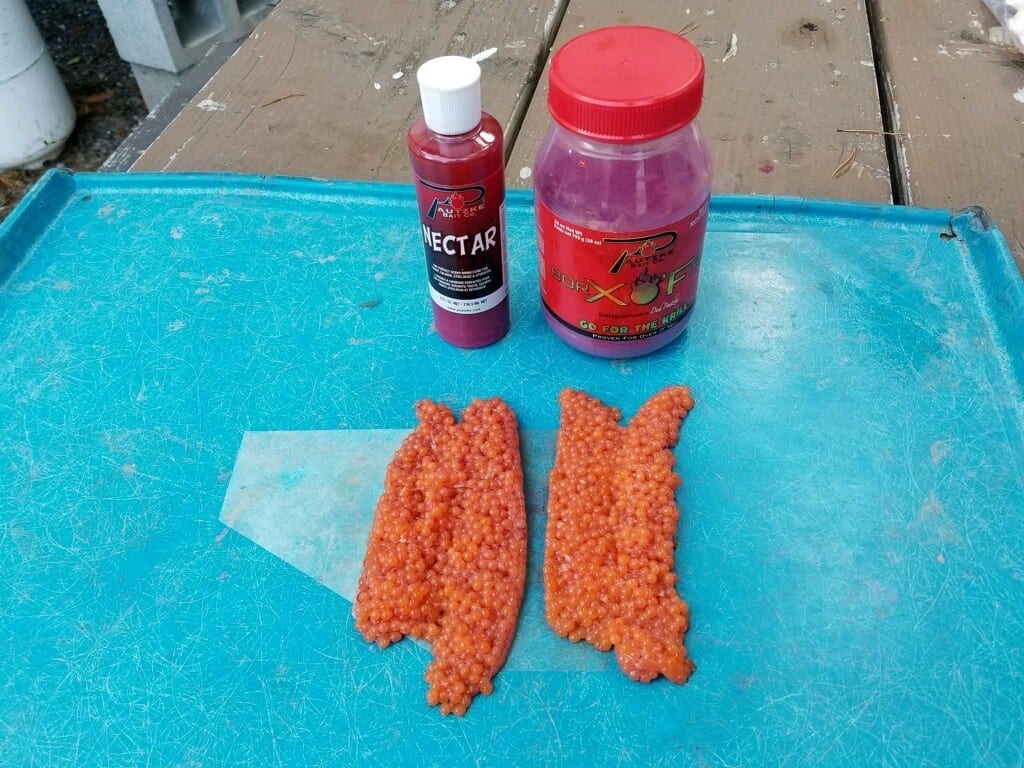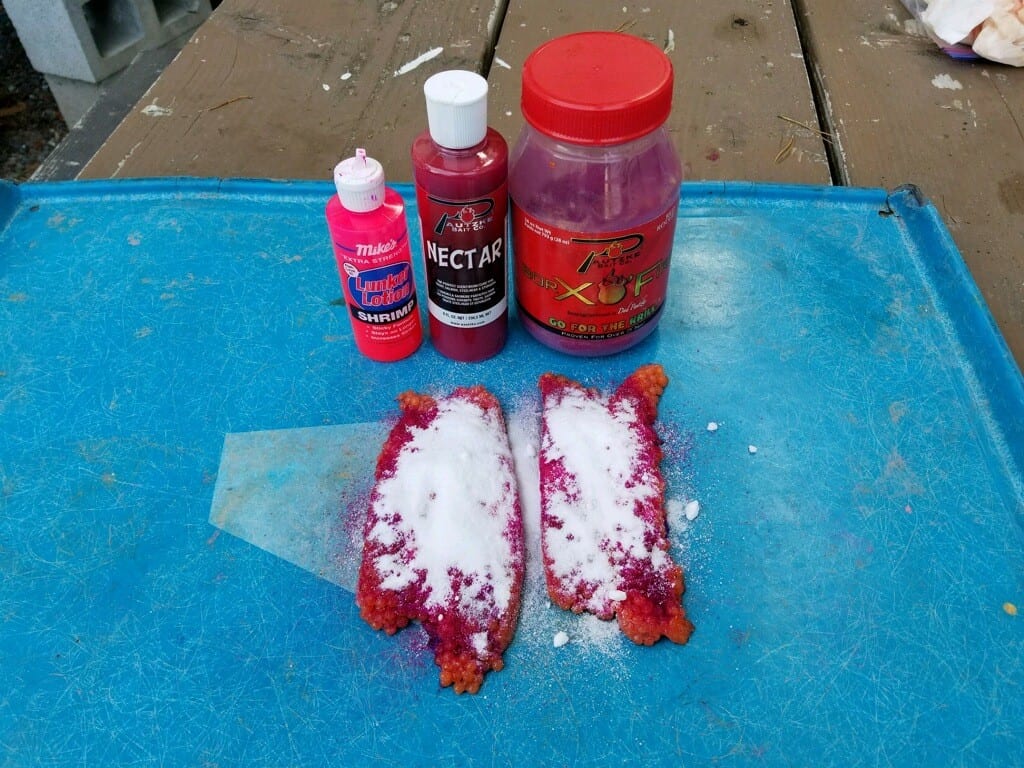Salmon
Guide Talks Borax Egg Cures For Fall Salmon
By: Alan Borges
On many of the big river systems along the West Coast the water tends to be warmer than salmon prefer in late summer and early fall. Many of these systems harbor water warmer than 65 degrees, which is warm for salmon. This warmer water also affects cured roe and forces me to alter my curing process to maintain perfect bait. To combat warm water I use drier pieces of roe rather than wetter, juicy pieces that some anglers employ. Warm water tends to thin bait out quicker. Couple that with moss that’s in the water (moss is common in warm water) and your bait is destined to fall apart quicker without curing it properly.
In these warm fall conditions I like a firmer egg that stays on the hook better. I want my bait to be more rubbery rather than a loose, juicy egg many anglers cast. The small pieces of cured roe I prefer still have a strong scent trail, but give me a firmer egg that lasts longer in warmer water. To achieve this firm egg I cure my roe in BorX O Fire.
There’s a myth out there that only sulfite cures work for salmon. Not true. I use a borax-based cure (BorX O Fire) for coastal salmon. It works daily and has for years. The borax egg is firmer than if I used a sulfite-based cure and I need that in these water temperatures. A borax-cured egg is more effective on our coastal rivers because it lasts longer. The runny and loose eggs (sulfite cured eggs) fall off the hook faster than the firm egg does.
Size also matters. The only time you need a huge piece of roe is when you are back bouncing. When side-drifting salmon don’t have that much time to look at it. It’s a reaction strike. For side drifting I use a size 4 Owner octopus hook (SSW) because of the lightness of it and how strong the hook is. When using this size hook I’ll use a piece of bait the size of a nickel. You don’t need a huge piece to catch salmon.
How To Cure Roe For Coastal Rivers
Step 1: Bleed Fish
As we always say, to end up with good eggs you need to start with good eggs. To do so make sure the salmon is completely bled out before you put it in the fish box. Any blood is not good.
Step 2: Butterfly
Take your skeins and butterfly them open. That means butterfly the egg part and not the skein. You want the skein to remain in tact.

Step 3: Remove Moisture
Place skeins on paper towels. Then roll them in paper towels and let the towels soak the moisture out of the skeins.
Step 4: Add Cure
Many anglers prefer different colors. Personally, I sprinkle Red BorX O Fire on the skein. I don’t put a ton of it on there. I use just enough to cover the skein.
Step 5: Add Additional Agents
Personally, I add scents to my cure at this time. Some people add sardine and shrimp flavor (Atlas Mikes Lunker Lotion) and other scent. I use Pautzke Red Nectar. If I’m curing two skeins (from one fish) I’ll just add squirt or two of the Nectar, whereas if I’m curing many skeins I’ll use half a bottle. At this point I also add plain white sugar. If I only have two skeins I’ll just use a dash of sugar.

Step 6: Let Eggs Cure
After applying scents (and in my case sugar) it’s time to place the roe in a bag or Tupperware. I let them sit in there for four or five days before I use them. The first few days I’ll roll them around a few times a day to make sure the juices mix well. After this the roe is fishable or can be stored for later use.
Editor’s Note: Veteran salmon guide Alan Borges operates Alan’s Guide Service. For more info on his guided West Coast salmon trips please visit www.alansguideservice.com.









